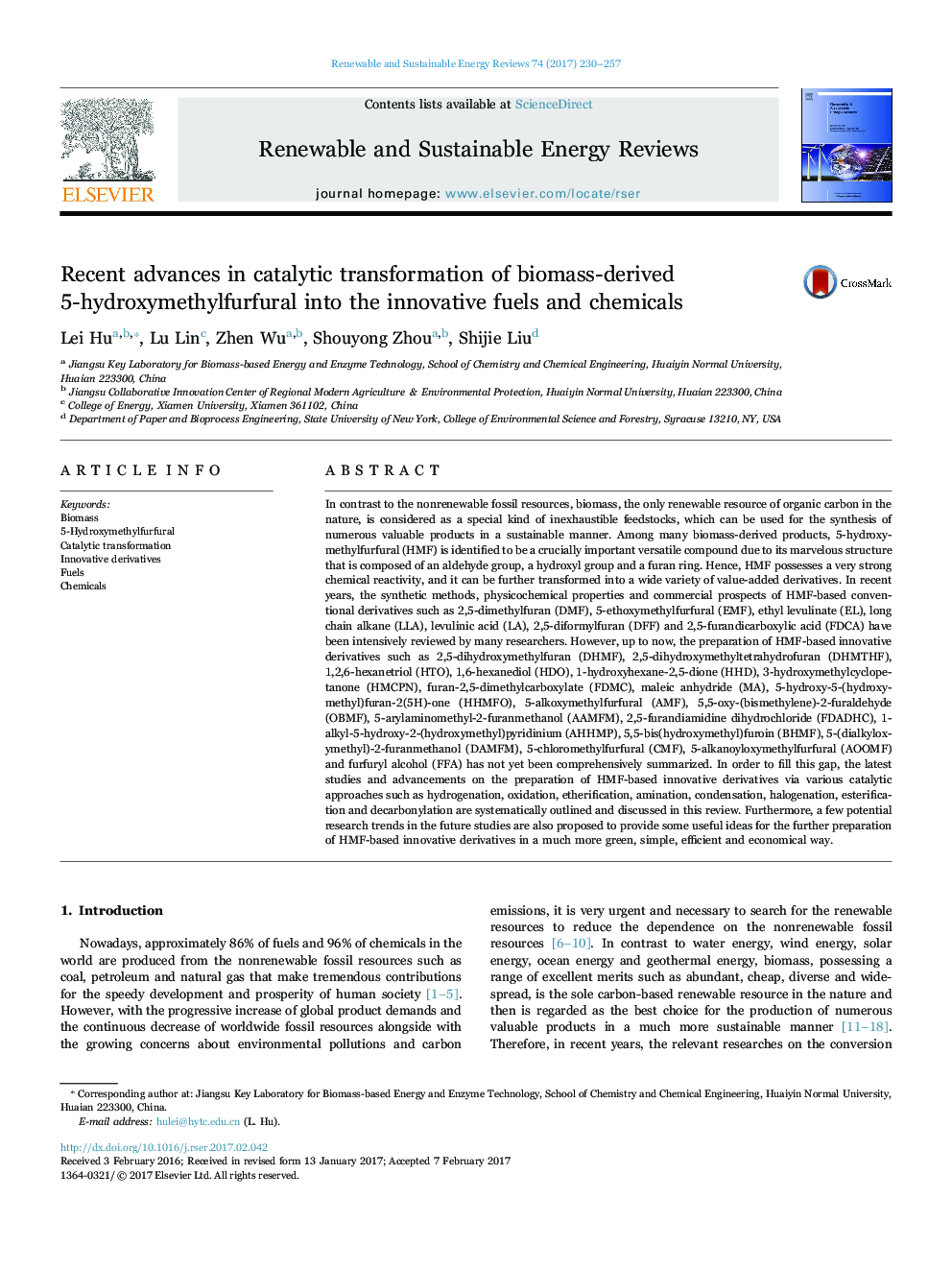| Article ID | Journal | Published Year | Pages | File Type |
|---|---|---|---|---|
| 5483120 | Renewable and Sustainable Energy Reviews | 2017 | 28 Pages |
Abstract
In contrast to the nonrenewable fossil resources, biomass, the only renewable resource of organic carbon in the nature, is considered as a special kind of inexhaustible feedstocks, which can be used for the synthesis of numerous valuable products in a sustainable manner. Among many biomass-derived products, 5-hydroxymethylfurfural (HMF) is identified to be a crucially important versatile compound due to its marvelous structure that is composed of an aldehyde group, a hydroxyl group and a furan ring. Hence, HMF possesses a very strong chemical reactivity, and it can be further transformed into a wide variety of value-added derivatives. In recent years, the synthetic methods, physicochemical properties and commercial prospects of HMF-based conventional derivatives such as 2,5-dimethylfuran (DMF), 5-ethoxymethylfurfural (EMF), ethyl levulinate (EL), long chain alkane (LLA), levulinic acid (LA), 2,5-diformylfuran (DFF) and 2,5-furandicarboxylic acid (FDCA) have been intensively reviewed by many researchers. However, up to now, the preparation of HMF-based innovative derivatives such as 2,5-dihydroxymethylfuran (DHMF), 2,5-dihydroxymethyltetrahydrofuran (DHMTHF), 1,2,6-hexanetriol (HTO), 1,6-hexanediol (HDO), 1-hydroxyhexane-2,5-dione (HHD), 3-hydroxymethylcyclopetanone (HMCPN), furan-2,5-dimethylcarboxylate (FDMC), maleic anhydride (MA), 5-hydroxy-5-(hydroxymethyl)furan-2(5H)-one (HHMFO), 5-alkoxymethylfurfural (AMF), 5,5-oxy-(bismethylene)-2-furaldehyde (OBMF), 5-arylaminomethyl-2-furanmethanol (AAMFM), 2,5-furandiamidine dihydrochloride (FDADHC), 1-alkyl-5-hydroxy-2-(hydroxymethyl)pyridinium (AHHMP), 5,5-bis(hydroxymethyl)furoin (BHMF), 5-(dialkyloxymethyl)-2-furanmethanol (DAMFM), 5-chloromethylfurfural (CMF), 5-alkanoyloxymethylfurfural (AOOMF) and furfuryl alcohol (FFA) has not yet been comprehensively summarized. In order to fill this gap, the latest studies and advancements on the preparation of HMF-based innovative derivatives via various catalytic approaches such as hydrogenation, oxidation, etherification, amination, condensation, halogenation, esterification and decarbonylation are systematically outlined and discussed in this review. Furthermore, a few potential research trends in the future studies are also proposed to provide some useful ideas for the further preparation of HMF-based innovative derivatives in a much more green, simple, efficient and economical way.
Related Topics
Physical Sciences and Engineering
Energy
Renewable Energy, Sustainability and the Environment
Authors
Lei Hu, Lu Lin, Zhen Wu, Shouyong Zhou, Shijie Liu,
